Gold price waits for rates clues from Jackson Hole
Political turmoil in the US has the potential to 'help gold in the short and longer term'
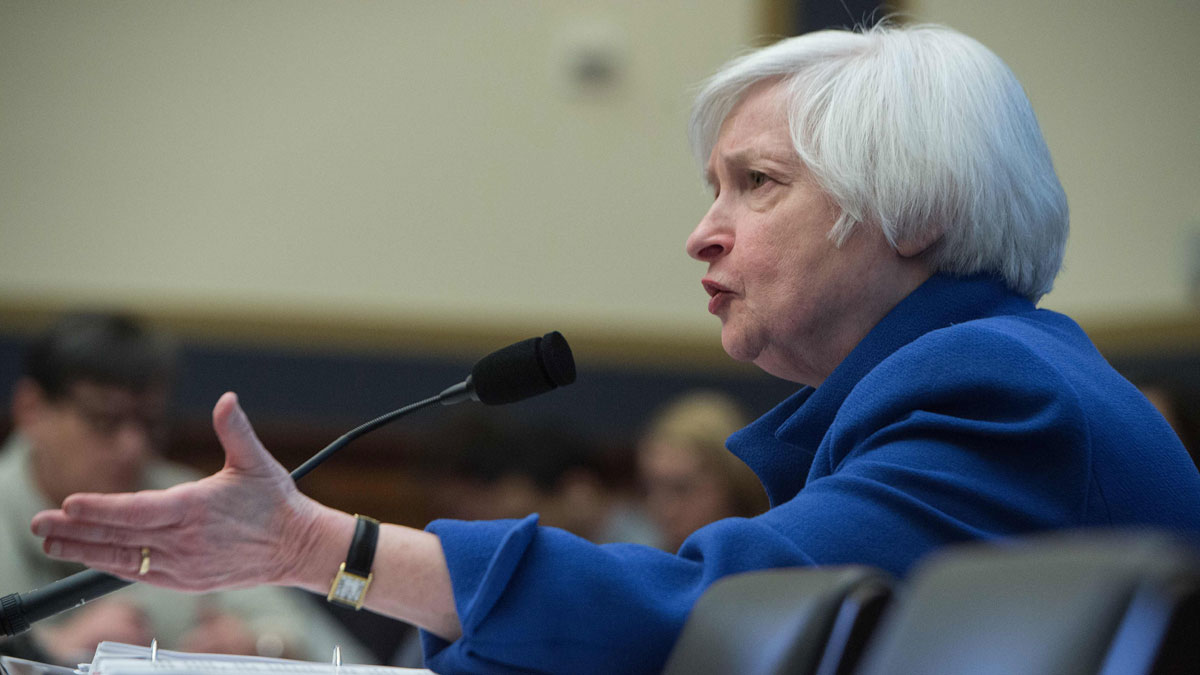
Gold price: 'fear trade' sets in as rally keeps rolling
01 February
The gold price trend appears to have broken free from the negative correlation with other key assets and market metrics.
In particular, gold has been said to have been held back in recent weeks and months by the strength of the US dollar, against which it is used as a hedge and so often moves inversely. But while the greenback rose overnight and is holding just shy of 12-year highs, with the dollar index close to 100 points, the metal also edged higher and the spot price is now above $1,122 an ounce.
The Week
Escape your echo chamber. Get the facts behind the news, plus analysis from multiple perspectives.

Sign up for The Week's Free Newsletters
From our morning news briefing to a weekly Good News Newsletter, get the best of The Week delivered directly to your inbox.
From our morning news briefing to a weekly Good News Newsletter, get the best of The Week delivered directly to your inbox.
In fact, gold is defying a few wider correlations. Global stocks were a little softer this morning but are coming off a major surge on Friday that left indices such as the FTSE 100 at multi-week highs, while recent renewed weakness in the oil price is holding down inflation - gold typically acts as a "safe haven" when risk assets such as equities fall and, as it is seen as a store of value, is held in bigger quantities when inflation is rising.
Why is gold defying these conventions? In part, it is a reflection of the less hawkish stance of the US Federal Reserve, which last week indicated it had not yet discounted a previously projected March rates rise but in an essentially dovish message, admitted this was under threat.
More important is the reason for the Fed's shifting stance. China continues to slow – another batch of weak manufacturing data was published overnight – and this is dragging down predictions for the global economy. There is evidence this is already beginning to take a toll on economies that had been recovering well, such as the US and UK. In short, a "fear trade" has taken over.
Writing in Forbes, Frank Holmes points to the claim by legendary investor Jeffrey Gundlach, the so-called "bond king" who has predicted gold could reach $1,400. Others have forecast a recovery to $1,200, $1,250 or $1,300.
A free daily email with the biggest news stories of the day – and the best features from TheWeek.com
Doubts remain, however. Gold is still below a stubborn resistance level around $1,125 and is only a few dollars above the level at which it has been stuck for most of the past week. If a crisis does not materialise soon and rates do continue to rise this year, "it's going to be very difficult for gold to hold on to these gains," says Mark Keenan, at Societe Generale.
Gold price shows mettle in face of bank big guns
29 January
The gold price retreated overnight after the Bank of Japan shocked global stock markets with the introduction of negative interest rates.
The minus 0.1 per cent benchmark rate will only apply to deposits by lenders with the central bank that exceed regulatory minimums. But the decision to charge banks for holding excess reserves, designed to encourage more money to be injected into the economy, is still a big move and it responds to consistent demands from investors for support.
DailyFX notes that stimulus from central banks should help to improve economic prospects and in theory mitigates risks, reducing the need "for safe-haven assets such as gold". It has also hit the value of the yen, a key reserve currency, relative to the US dollar. This will boost the greenback, against which gold is held as a hedge and is therefore negatively correlated.
Gold plummeted in Asian trading immediately after the announcement, sinking near to $1,100. DailyFX noted that if a key support level of $1,103 was passed, the metal could even push below this key threshold, which had acted as the ceiling of a tight range earlier in January.
But gold has recovered strongly since the bombshell was dropped and was at $1,114 in London at around 10.30am today. This is just less than $5 less than the price at which it had settled yesterday, even despite a strong rally on European markets that has seen the FTSE-100 nudging 6,000 points.
There are diverging opinions on where the precious metal will head from here. Should the economic travails that have prompted market mayhem so far this year prove to be a harbinger of a more serious global slowdown, gold could rise to as high as $1,300, say some observers. Others who do not see another financial crisis emerging reckon weak inflation, a strong dollar and more rate rises from the US Federal Reserve will eventually lead gold lower for the fourth year in a row.
At the moment, with even the usually stoic Bank of Japan resorting to extreme measures, those predicting tougher times ahead that will benefit gold are arguably in greater number. "We envisage that a bottom is firmly in place for gold," Naeem Aslam, Ava Trade's chief market analyst, told Reuters. "It could be the best performing commodity for this year."
Gold price unmoved as Fed masters mixed message
28 January
The gold price had been expected to settle markedly either up or down yesterday, after the US Federal Reserve issued its latest eagerly anticipated policy announcement on interest rates.
In the event, it was all something of a damp squib. Initially, the spot price of the yellow metal jumped to $1,127 an ounce, but it quickly retreated from that high and this morning was steady at $1,118 - a virtually identical level to where it has spent most of this week. This reflected the steadier sentiment that has taken hold across Europe's equity markets in the wake of the Fed's statement.
Previously, the central bank had appeared at a loss to convey an effectively nuanced view on its policy intentions, but yesterday's publication finally seemed to show rate-setters have mastered the mixed message. They noted global economic headwinds and weaker domestic data, but suggested it was too early to tell whether the projected path of rate rises set out in December needed to be slowed.
The immediate bounce in gold seemed to reflect the fact that the global economic travails had been acknowledged – and market bets on a March rise are now as low as 25 per cent.
But Reuters points out that "policymakers said the economy was still on track for moderate growth and a stronger labour market even with 'gradual' rate increases, suggesting its concern about global events had diminished but not squashed chances of a rate hike in March".
David Kelly, the chief strategist at JPMorgan’s asset management arm, told the Financial Times: "The Fed carefully toed the line between dovish and hawkish in an attempt to reassure the markets that rate increases will be gradual and data dependent, without sending an overly dovish message that could be interpreted as worrisome for markets."
Another factor holding back gold was investors taking profits after its recent rally, Daniel Ang, an investment analyst at Phillip Futures in Singapore, told Reuters. "I think the safe-haven appeal of gold is tapering off a bit and investors are looking at other havens such as the Japanese yen," he added.
Gold price: what will happen after Fed rates call?
27 January
Gold has been resurgent of late and the price rose again on Tuesday, hitting a three-month high above $1,120 an ounce as equities gyrated.
A "safe-haven" rally in the precious metal driven by an awful start to the new year on equity markets has pushed spot prices up five per cent. The equities malaise is itself being caused by worries over Chinese growth and a slumping oil price and these factors, coupled with weaker inflation as a result of lower energy prices, is boosting gold as it is seen as a shore of value.
Some reckon, though, that the latest leg-up has come primarily as a result of the worsening global growth outlook tempering interest rate rise expectations. The US Federal Reserve nudged its base rates up for the first time in nearly a decade last month and had been projected to do so four more times this year, which would be bad news for non-yielding gold.
Latest market predictions, according to the Financial Times, are for the Fed to raise rates just once more this year – and even then, not for many months yet. It is this, according to several analysts, that has "reset" price expectations for gold and pushed it above $1,100 an ounce. It was at $1,118 in London this morning.
In the context of these bets, the meeting of Fed rate-setters currently taking place is very important. Traders are expecting its statement at the end of talks tonight to show a definitively more dovish tone that points to a slower path for rate rises than set out in December. But some brokers, such as BNP Paribas, say they may be disappointed.
"Central banks move more slowly than markets. Those expecting a strongly dovish statement are likely to be disappointed by fewer changes," BNP said in a report cited by Forbes. They expect policymakers to acknowledge wider market concerns, but also to "to highlight strength in the domestic economy and labour market".
BNP, IG Markets and Saxo Bank are thus predicting a more balanced statement that will drive the dollar higher and could hit gold, which may even fall back to the $1,100 at which it spent much of last week. Of course, if the statement is as or more dovish than the market is anticipating, gold could surge even higher still.
Gold price: why it could surge to $1,300 – or might not
26 January
The gold price has finally broken through an upper price range of $1,100 that had become an effective ceiling, giving hope to those banking on a big rise for the metal this year.
But what is driving the current trend and will it build on the understated rally that has taken hold since the beginning of 2016 or run out of steam? There are arguments on both sides of the debate and forecasts this year range from a fall to a surge to $1,300.
Why gold is rising
In short, this is a "safe-haven" rally. Stock markets have been tumbling and endured their worst start to a new year ever, based on a combination of concern over growth in China, the renewed slide in oil prices and a general sense that global growth could slow considerably. All of which should prompt the Fed to push back estimates of another interest rate rise this week, too, which benefits non-yielding gold.
If the US central bank does sound a dovish note tomorrow, then gold could rise further from its current $1,114 an ounce. "Gold might go for a run," Brian Lan, the managing director at gold dealer GoldSilver Central in Singapore, told Reuters. He said the metal could test a high of $1,138 reached on 3 November and "if that is breached, it could go to $1,160".
Why it might go to $1,200, $1,250 or $1,300
"If gold can stay above $1,100 in the coming days, it may signal a further rebound, maybe even to $1,200 in the coming months," Mark To, the head of research at Hong Kong's Wing Fung Financial Group, told Bullion Vault. A note from analysts at HSBC claimed it is now only a big legacy bet by hedge funds against gold that is holding the price down.
Essentially, this reflects the view that markets will remain weak and gold is set for a prolonged recovery after a three-year slump. If this holds to the end of the year, the price may have advanced substantially. Simona Gambarini, the commodities economist at Capital Economics, told City AM prices could go to $1,200, while the newspaper also cites predictions of "up to $1,300 an ounce".
And why it might not
Despite more positive forecasts, gold "isn’t behaving like a safe haven should", writes Swaha Pattanaik on Reuters. "Its price is down more than three per cent since November 2015, even as the S&P 500 index has declined eight per cent. And on 20 January, when a global equity rout pushed the MSCI World equity index down more than three per cent, gold’s rebound fell almost $3 short of highs set earlier in the month."
Gold is less secure as a safe haven than it once was because of the surge in speculative investments via exchange-traded funds, she says, while in any case, the still-strong dollar that would be boosted by any rates increases could cap rallies unless there is a more severe global financial meltdown.
Carsten Menke, the commodity analyst at Julius Baer, says much the same. “We have been telling clients to watch what’s going on because we do not believe that this recovery in gold will be lasting unless there is a global crisis," he told City AM. He predicts prices will "end the year back down at $1,100 an ounce".
-
 ‘Managed wildfires have spread out of control before’
‘Managed wildfires have spread out of control before’Instant Opinion Opinion, comment and editorials of the day
-
 Separating the real from the fake: tips for spotting AI slop
Separating the real from the fake: tips for spotting AI slopThe Week Recommends Advanced AI may have made slop videos harder to spot, but experts say it’s still possible to detect them
-
 Europe sets 2027 deadline to wean itself from Russian natural gas
Europe sets 2027 deadline to wean itself from Russian natural gasIN THE SPOTLIGHT As international negotiators attempt to end Russia’s years-long invasion of Ukraine, lawmakers across the EU have reached a milestone agreement to uncouple the continent’s gas consumption from Moscow’s petrochemical infrastructure
-
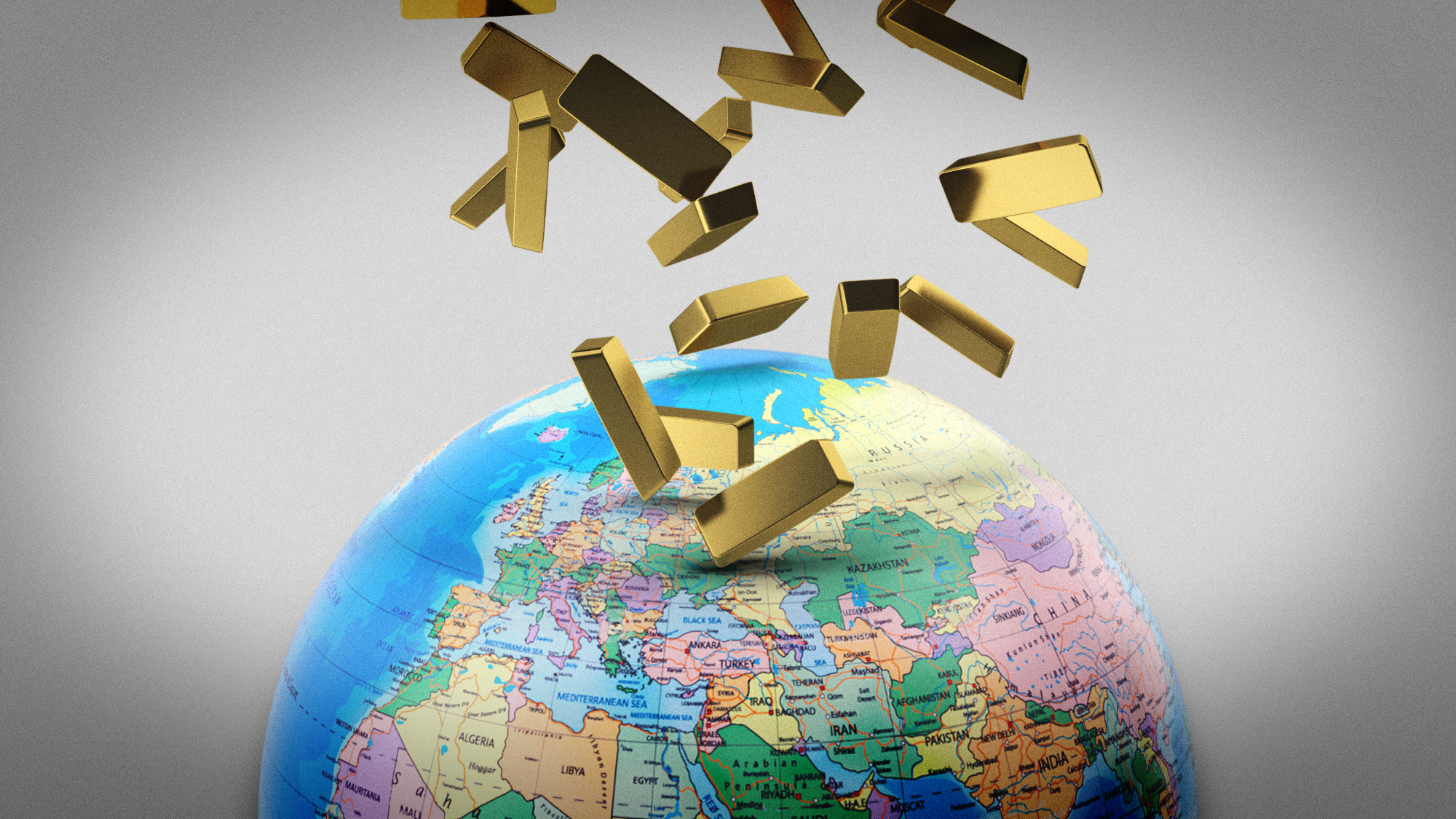 What a rising gold price says about the global economy
What a rising gold price says about the global economyThe Explainer Institutions, central banks and speculators drive record surge amid ‘loss of trust’ in bond markets and US dollar
-
 Gold tops $4K per ounce, signaling financial unease
Gold tops $4K per ounce, signaling financial uneaseSpeed Read Investors are worried about President Donald Trump’s trade war
-
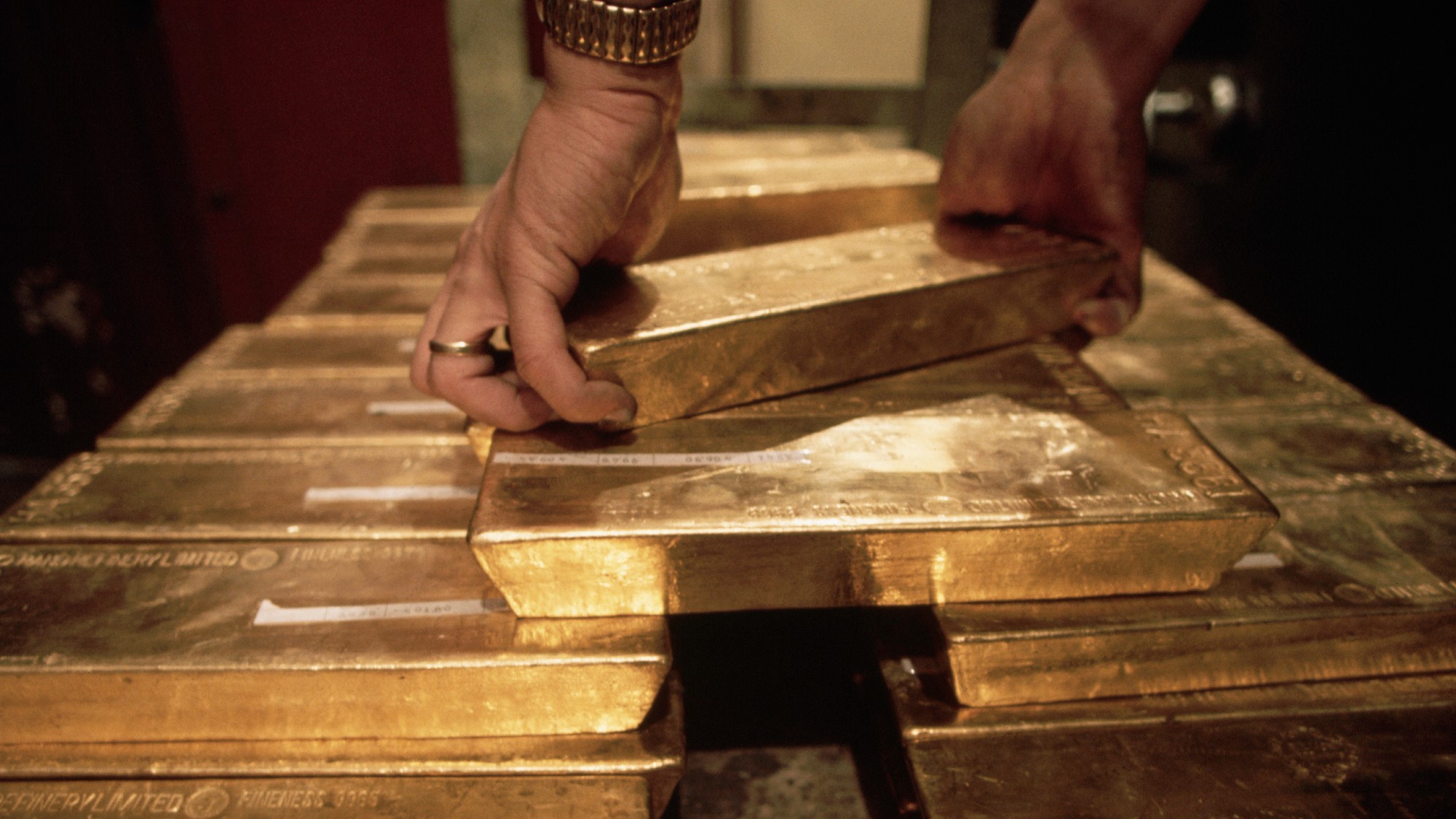 Safe harbor: Gold rises as stocks sink
Safe harbor: Gold rises as stocks sinkfeature It's a golden age for goldbugs
-
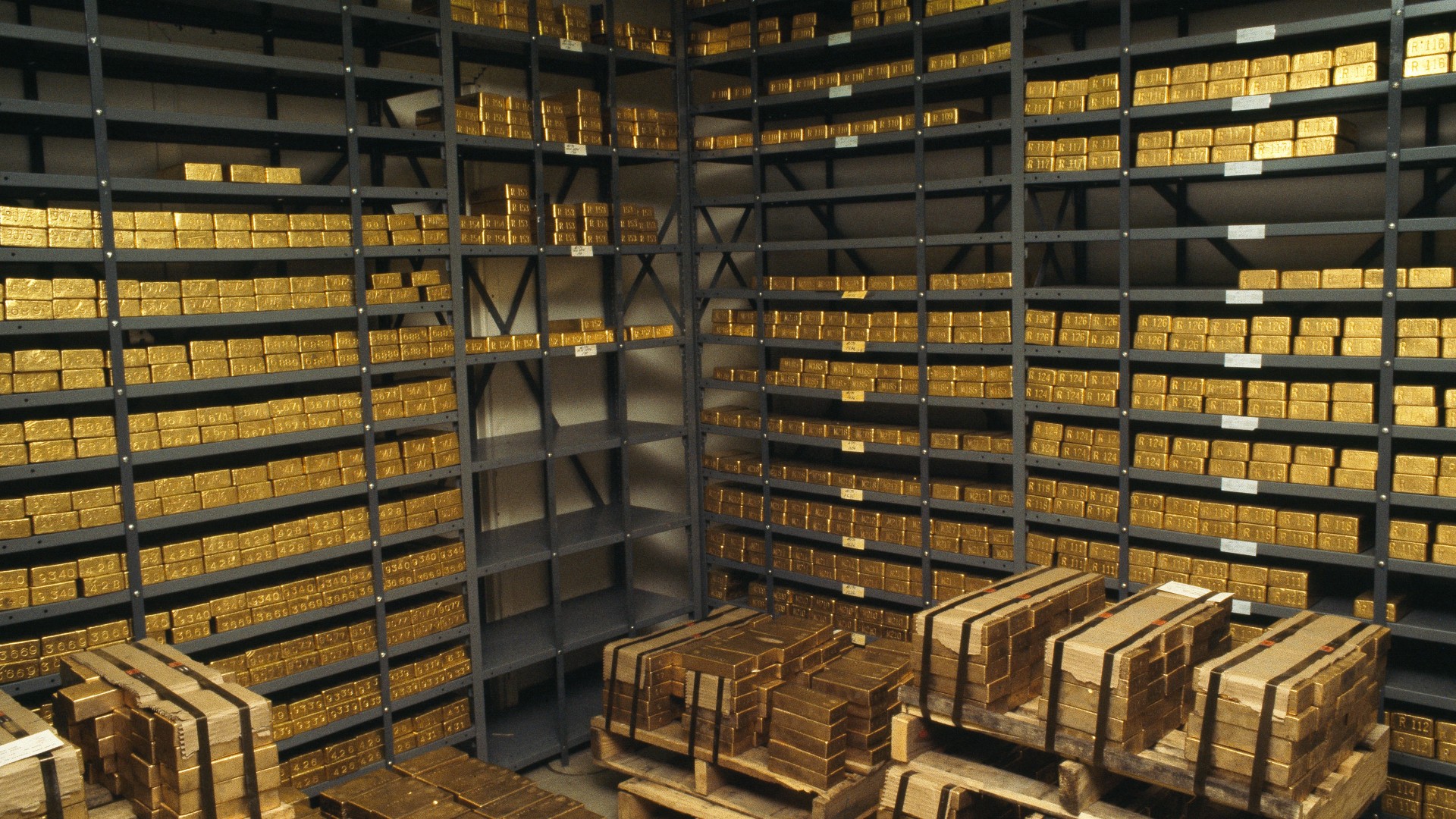 What rising gold prices can tell us about the economy in 2024
What rising gold prices can tell us about the economy in 2024The Explainer Market hits all-time high, boosted by a weakening US dollar and rising global tensions
-
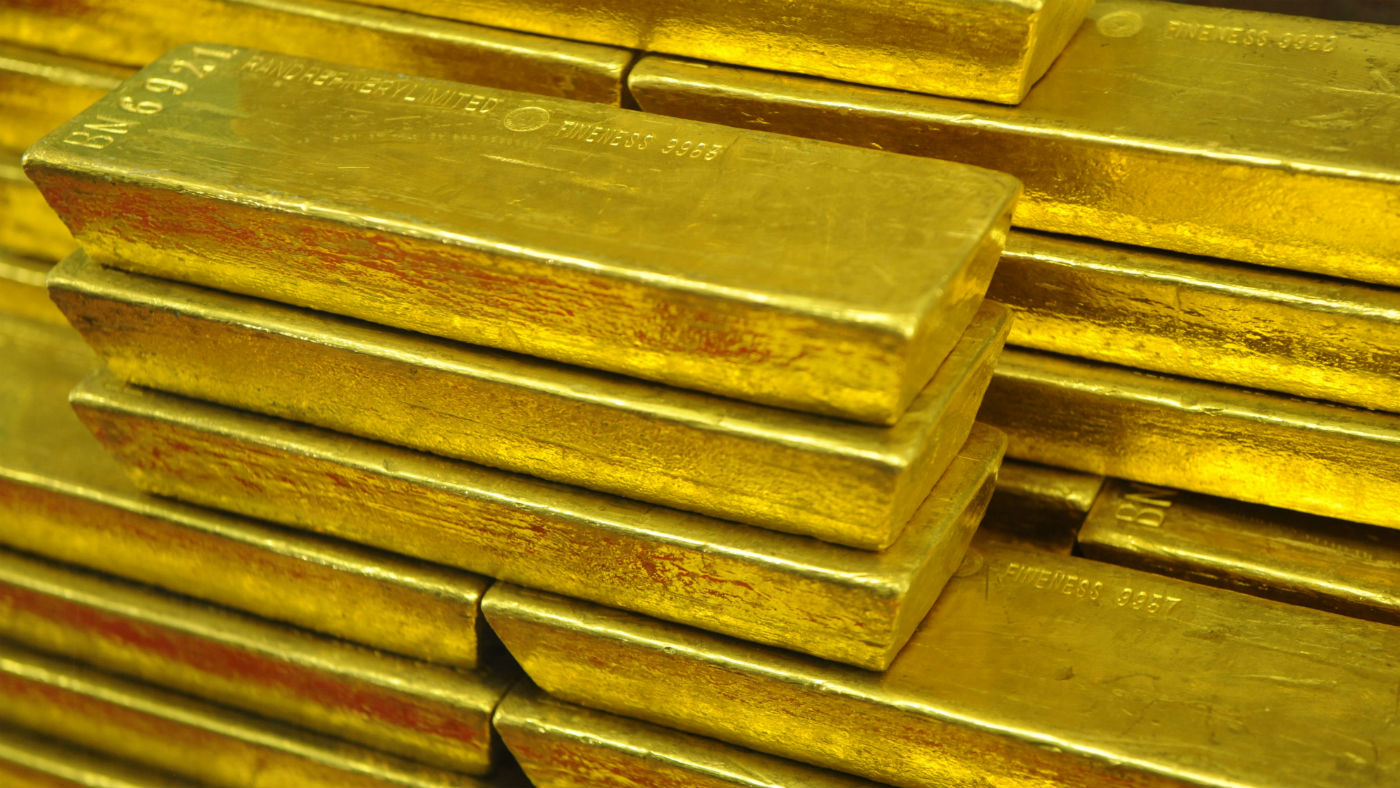 Gold’s ‘flash crash’: what the experts think
Gold’s ‘flash crash’: what the experts thinkfeature Bad news, good news and a loss of faith
-
 What is the price of gold and when is best to buy?
What is the price of gold and when is best to buy?Speed Read Economic and geopolitical uncertainty traditionally drives investors to reliable metal markets